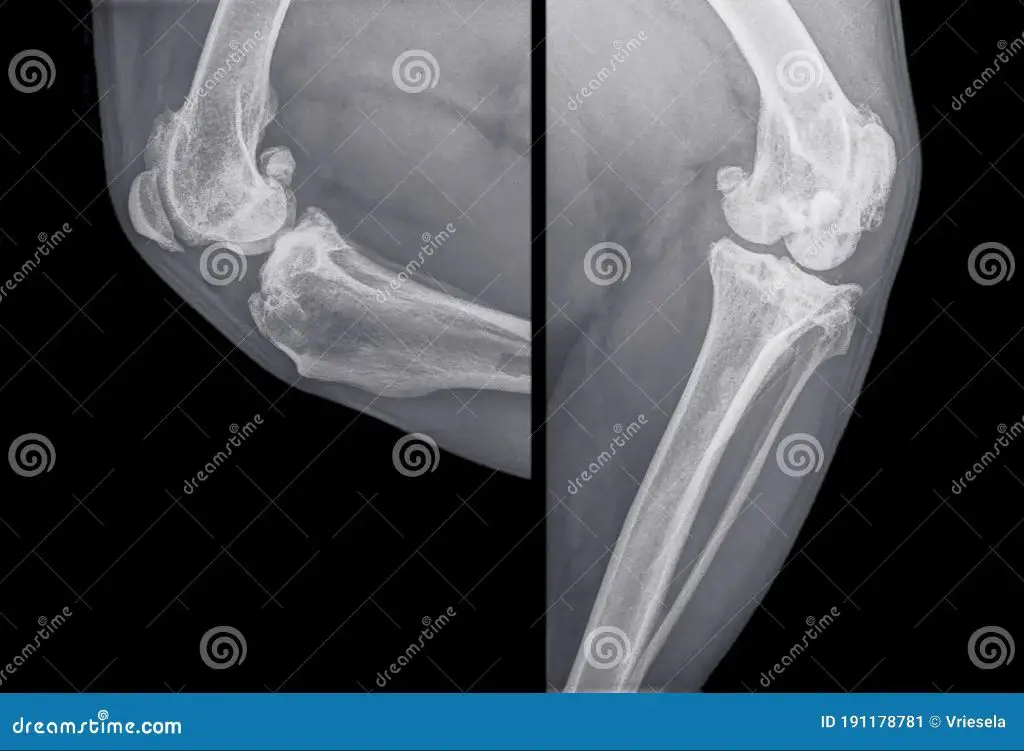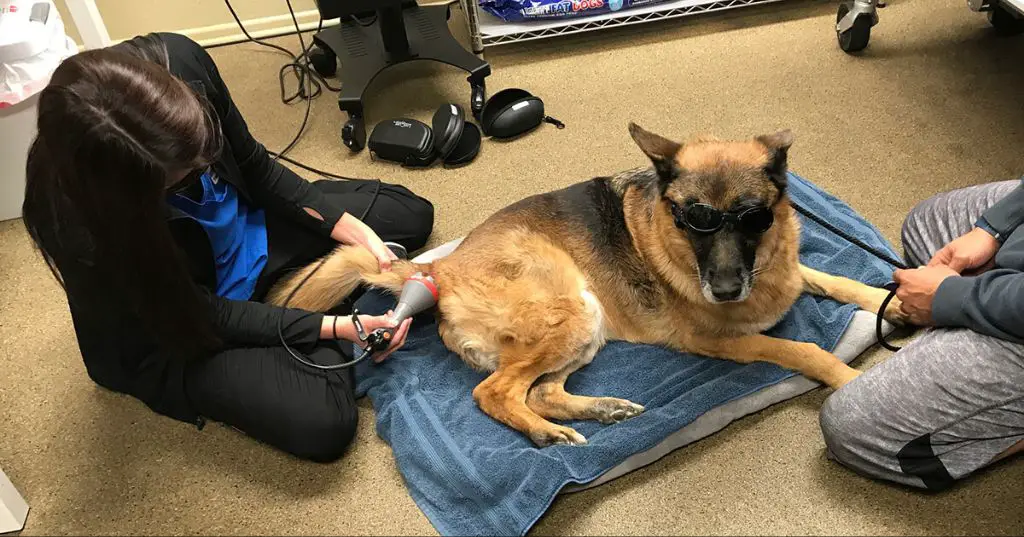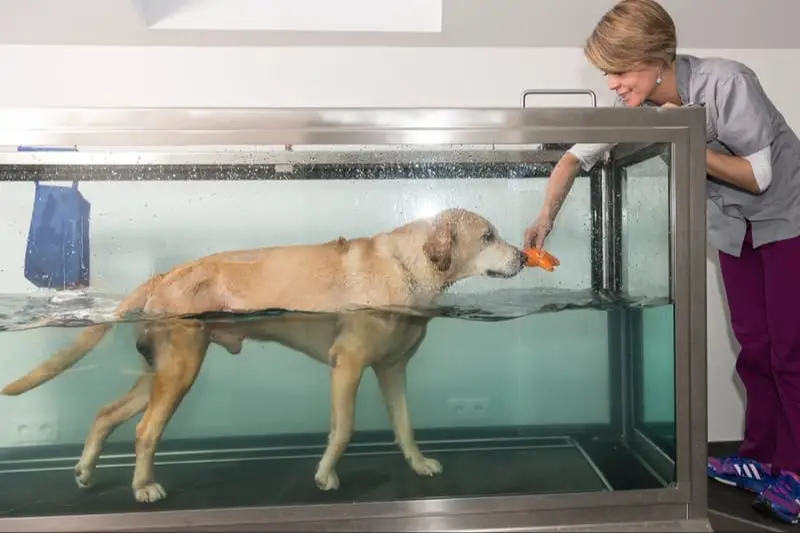Introduction
Arthritis is a common joint disease in dogs that causes pain and inflammation in the joints. It often develops as dogs age, but can also occur in younger dogs due to injury or genetic factors. X-rays are one of the main diagnostic tools vets use to diagnose and evaluate arthritis in dogs.
The purpose of x-rays for diagnosing arthritis is to allow vets to visualize the bones and joints and identify any signs of degenerative changes. X-rays can help confirm a diagnosis of arthritis and allow the vet to assess the severity and progression of the disease. This helps the vet determine the best treatment options for managing the dog’s arthritis pain and joint damage.
What is Arthritis in Dogs?
Arthritis is inflammation of one or more joints that causes pain and stiffness. The most common form in dogs is osteoarthritis (OA), which occurs when the cartilage that cushions the bones breaks down over time. OA can involve one or multiple joints. Some other types of arthritis in dogs include rheumatoid arthritis, infectious arthritis, and immune-mediated polyarthritis.
The main causes of OA include:
- Wear and tear – Especially in older dogs, the cartilage wears down from years of use and age
- Injury or trauma – Damage to joints like ACL tears or fractures puts more stress on the joint
- Developmental diseases – Issues like hip dysplasia that cause improper joint formation
- Obesity – Excess weight puts more pressure on joints like hips and knees
Common signs of arthritis in dogs include:
- Stiffness and limping, especially after rest
- Difficulty with activities like jumping or stairs
- Decreased activity and more sleeping
- Personality changes like increased aggression or irritability
- Licking and chewing at joints
Arthritis is very common in older dogs, with estimates ranging from 20-60% of dogs developing OA later in life. While there is no cure, various treatments can help manage pain and improve mobility.
Why Xrays are Used to Diagnose Arthritis

X-rays are one of the primary diagnostic tools vets use to diagnose arthritis in dogs. X-rays allow vets to visually examine the bones and joints for signs of arthritis that may not be obvious from just a physical exam.
Specifically, x-rays can detect changes in the joints and bones caused by osteoarthritis, the most common form of arthritis in dogs. Osteoarthritis results in a gradual wearing down of the protective cartilage in the joints over time. As the cartilage deteriorates, bone spurs and other bony growths often develop as the bones try to stabilize the joint. These bony changes are visible on x-rays and indicate osteoarthritis is present.
In addition, x-rays allow vets to see other signs of osteoarthritis like narrowing of the joint space, sclerosis or hardening of the bone, and calcification in the joint capsule. Swelling of soft tissues around the joint may also be evident. All of these changes can confirm a diagnosis of arthritis (Canine Arthritis).
So in summary, x-rays provide vets with a detailed view of the joints and bones, which allows them to detect the bone changes and damage that signals arthritis is present.
What Vets Look for in Arthritis Xrays
Veterinarians use X-rays to look for several key signs of arthritis in dogs. According to research, the main radiographic signs of arthritis that vets look for include:
Bone spurs – Also called osteophytes, bone spurs are bony projections that form along the edges of joints. Their presence indicates the body’s attempt to stabilize the joint. Bone spurs show up on X-rays as fluffy, whisker-like extensions of bone along the joint margins (https://www.ncbi.nlm.nih.gov/pmc/articles/PMC7152260/).
Joint space narrowing – This occurs when the cartilage between bones gradually wears away, causing the bones to rub together. Joint space narrowing is a telltale sign of arthritis progression. On X-rays, the gap between bones will appear smaller than normal (https://www.vin.com/doc/?id=8249676).
Bone density changes – Arthritic joints often develop sclerotic subchondral bone, meaning the bone under the cartilage becomes denser. On the other hand, lytic lesions or bone loss can occur from chronic inflammation. These changes in bone density are detectable on X-rays (https://www.vin.com/doc/?id=8249676).
Limitations of Arthritis Xrays
While xrays can be useful for diagnosing arthritis, there are some limitations to consider:
In the early stages of arthritis, an xray may appear normal even though a dog is experiencing pain and inflammation. This is because significant bone changes like osteophytes (bone spurs) often don’t develop until later stages of the disease 1.
Xrays show bone structure but can’t visualize soft tissue structures like ligaments, tendons, and cartilage. Issues with these soft tissues may be causing pain but won’t show up on radiographs. For example, a torn cruciate ligament in the knee could be missed on an xray 2.
Overall, while arthritis xrays are useful, they have limitations in detecting early disease or soft tissue injuries. Other diagnostic tests may be needed to fully evaluate a dog’s joint pain and mobility issues.
Other Diagnostic Tests for Arthritis
In addition to x-rays, vets may use other diagnostic tests to confirm an arthritis diagnosis and determine the extent of joint damage. Some common tests include:
Joint Fluid Analysis – Extracting and analyzing fluid from the affected joint can detect inflammation and rule out infectious forms of arthritis like Lyme disease. Increased white blood cell counts in the fluid indicate inflammation [1].
CT Scans – CT scans provide detailed 3D images of bone and allow vets to see abnormalities not visible on x-rays. CT scans are better for detecting bone spurs, cysts, and fractures associated with osteoarthritis [2].
MRI – MRI allows vets to assess soft tissue structures like ligaments and tendons, in addition to bones. MRIs can detect inflammation and joint damage earlier than x-rays [3].
Arthroscopy – This minimally invasive procedure involves inserting a small camera into the joint for direct visualization. It allows vets to assess cartilage damage and obtain tissue samples if needed.
Treatment Options for Arthritis

There are several options for treating arthritis in dogs to help manage pain and improve mobility. Treatment plans are tailored to each dog’s specific needs and severity of arthritis.
Some common treatment options include:
Weight Management
Keeping dogs at an optimal weight is important, as extra weight puts more pressure on the joints. Vets may recommend a reduced calorie diet to help dogs lose weight if needed (AKC, 2022).
Exercise
Low-impact exercise like short walks, swimming, or gentle play can help strengthen muscles, increase flexibility, and reduce joint pain. Owners should avoid high-impact activities that could further damage arthritic joints (VCA Hospitals).
Physical Therapy
Canine physical therapy techniques like massage, stretching, range-of-motion exercises, and hydrotherapy can improve joint mobility and reduce stiffness.

Medications
Vets may prescribe NSAIDs, joint supplements, steroids, or pain medications to reduce inflammation and provide pain relief. Medications should be closely monitored for side effects.
Supplements
Nutritional supplements like glucosamine, chondroitin, and omega-3 fatty acids may help rebuild cartilage, improve joint lubrication, and reduce inflammation (CSU Veterinary Teaching Hospital).
Managing Arthritis in Dogs
There are several ways to help manage arthritis pain and improve mobility in dogs. Providing low-impact exercise, massage, orthopedic beds, and monitoring for pain are some of the most effective at-home care options.
Low-impact exercise like short walks, swimming, or gentle play can help maintain muscle strength and joint flexibility without putting too much pressure on the joints. Activities should be done at the dog’s pace and stopped if they appear tired or sore. Seek advice from your vet on appropriate exercise plans. Source
Gentle massage increases blood flow and warm compresses can relax muscles. Focus on massaging major joints and muscles around the hips, legs, neck, shoulders and back. Always check with your vet before massaging arthritic areas. Source
Providing orthopedic dog beds with memory foam or egg crate cushions can make resting and sleeping more comfortable. They distribute weight evenly and don’t put pressure on sore joints. Use beds with low edges so it’s easy for the dog to stand up. Source
Monitor your dog for signs of arthritis pain like limping, whining, changes in behavior, difficulty with stairs, and reluctance to exercise or play. Keeping a journal of your dog’s good and bad days can help the vet determine proper treatment. Source
When to See a Vet

Based on the content brief and additional guidelines, there are certain signs to look for in your dog that indicate it’s time to take them to the vet for evaluation of possible arthritis:
Persistent Lameness: If your dog is showing signs of limping or difficulty walking on a consistent basis, it’s important to get them checked out. Lameness that persists more than a day or two, or comes and goes, can indicate osteoarthritis is developing.
Reluctance to Move: Dogs with arthritis often become less active because movement is painful. If your normally energetic dog is suddenly reluctant to go for walks, jump up on furniture, or has difficulty with stairs, arthritis may be the cause.
Changes in Behavior: Arthritis can cause dogs to act differently. Signs like unusual aggression, irritability, restlessness at night or crying/whining can signal your dog is in chronic pain. Make an appointment if you notice behavioral shifts.
Arthritis is progressive, so early veterinary evaluation and treatment is key to slowing its impact on mobility and quality of life. At the first signs of persistent issues, it’s best to have your dog seen rather than waiting. Your vet can determine if arthritis is the underlying problem and start appropriate therapies.
Sources:
https://www.aspcapetinsurance.com/resources/symptoms-of-arthritis-in-dogs/
https://alphadognutrition.com/blogs/alpha-blog/4-signs-take-your-dog-vet-for-arthritis
Conclusion
X-rays can be an invaluable tool for vets to diagnose arthritis in dogs. While x-rays alone cannot definitively diagnose arthritis, they can reveal important signs like bone spurs, loss of cartilage, and bony changes that are indicative of osteoarthritis. However, other tests like a physical exam, joint fluid analysis, and observation of symptoms may also be needed to reach an accurate arthritis diagnosis.
Once arthritis is diagnosed, ongoing management is crucial. Arthritis is a progressive disease so starting treatment as early as possible can help slow its advancement and minimize permanent joint changes. Working closely with your vet to find the right treatment plan for your dog’s individual needs is key. This may include weight management, exercise modification, medication, supplements, physiotherapy and more. While arthritis cannot be cured, properly managing it can help provide dogs with an improved quality of life.